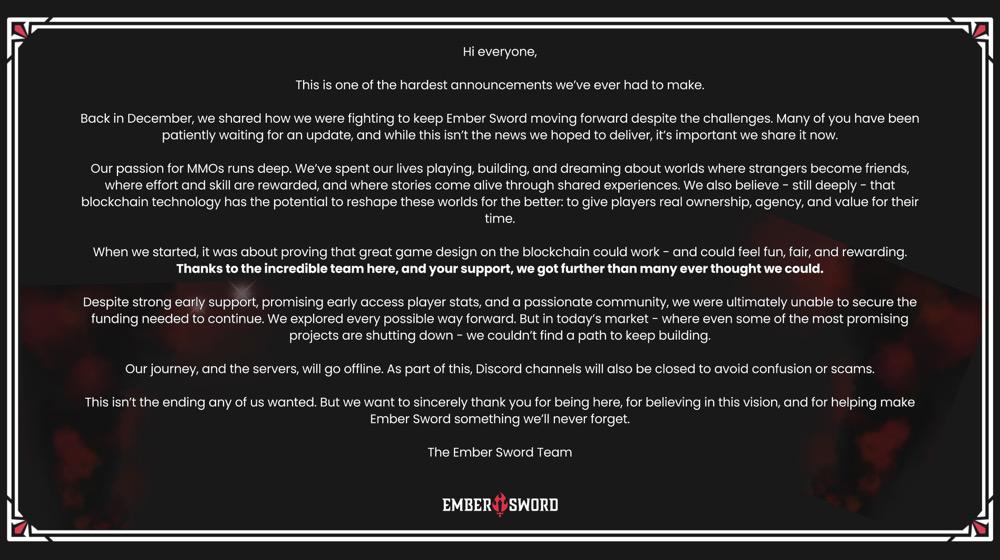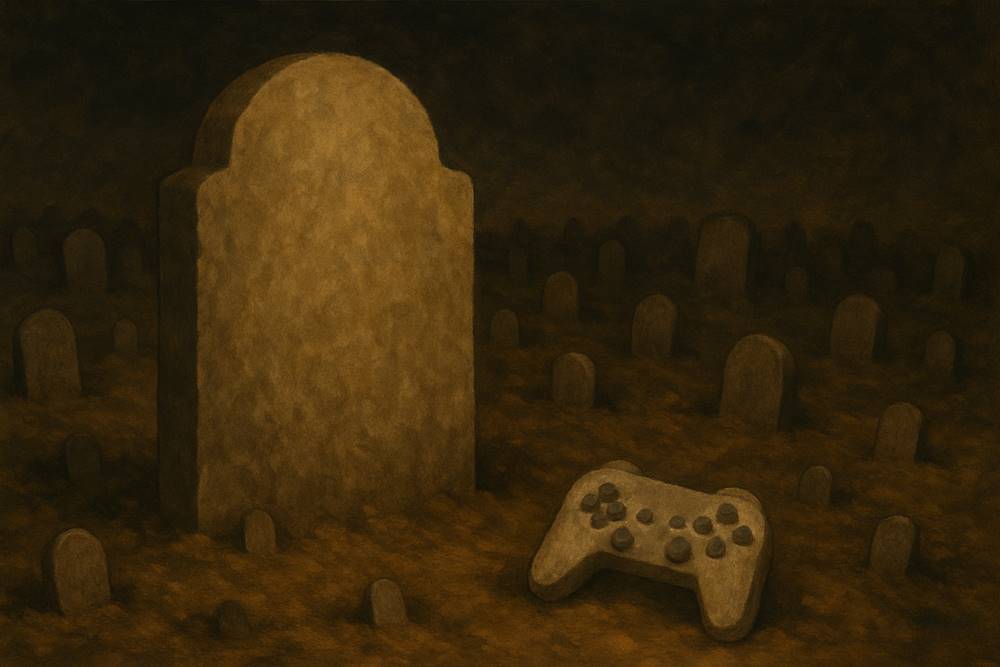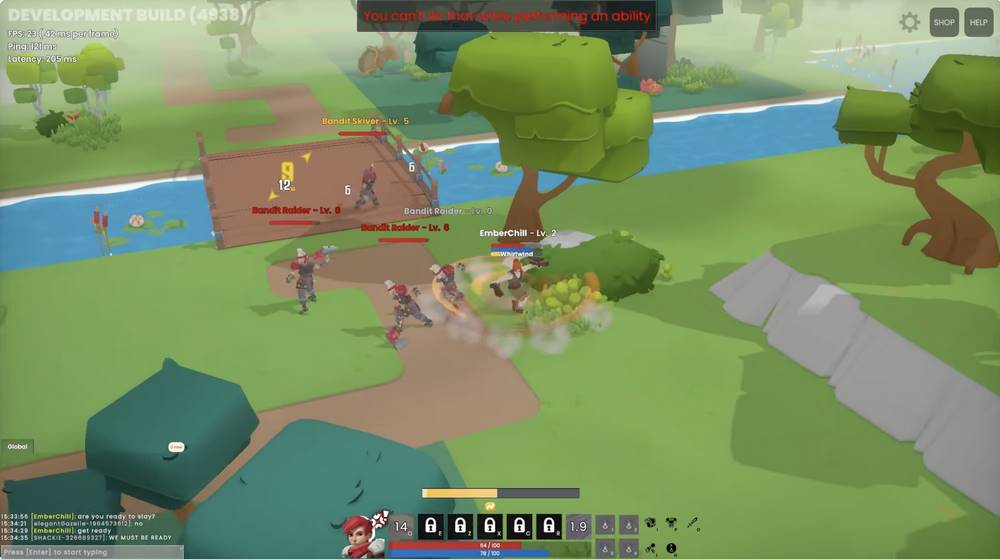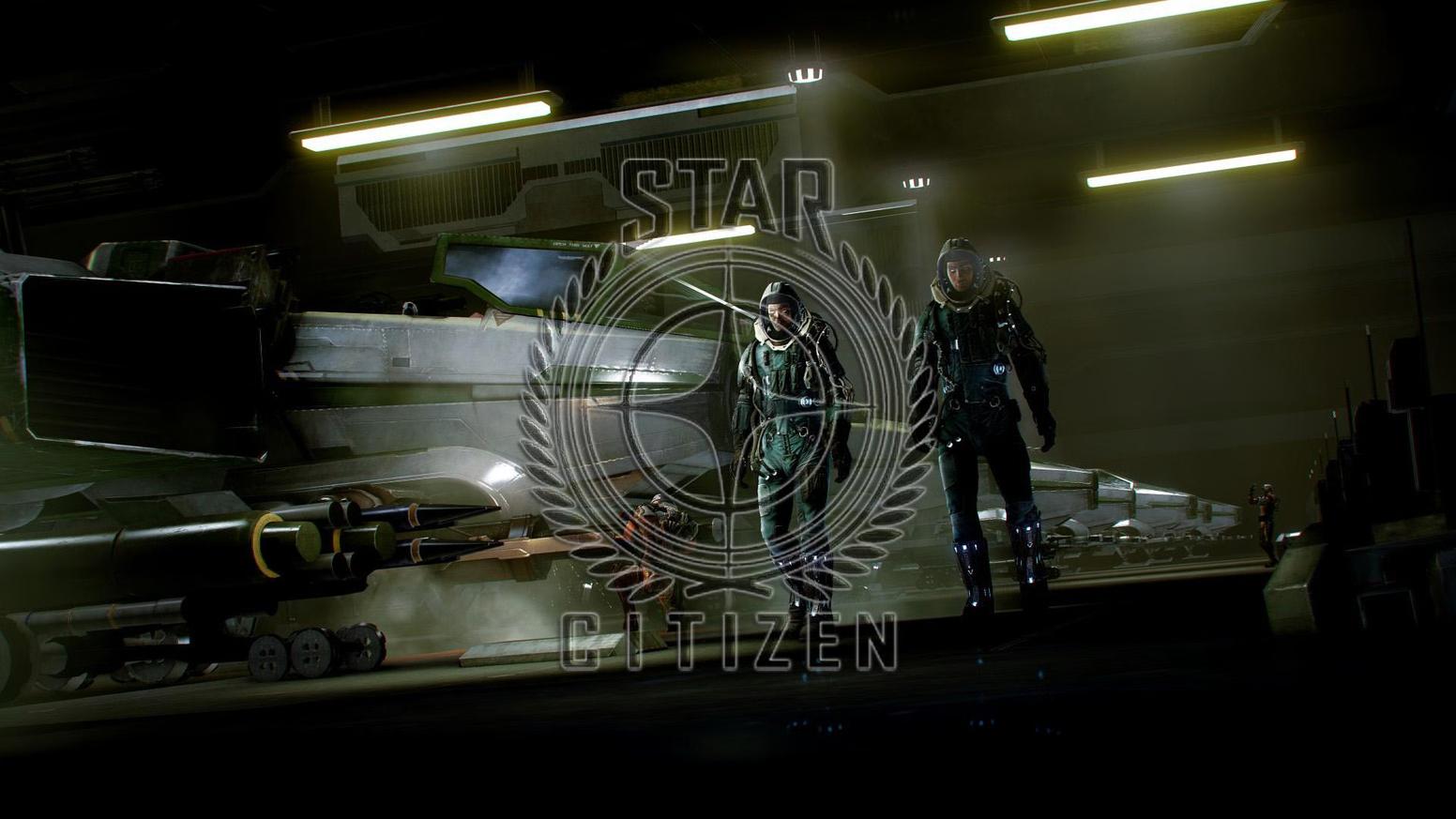Why Do Chain Game Investors Feel More Pain Despite Being Game Payers?
Written by: Zen, PANews
The Web3 chain game "MapleStory N," adapted from the classic IP "MapleStory" by South Korean gaming giant Nexon, has recently officially launched. With the strong performance of its NXPC token, the long-silent Web3 gaming sector has regained widespread attention. Many are beginning to envision a revival of GameFi.
However, one side is heaven, and the other is hell.
Since 2025, the Web3 (blockchain) gaming sector has seen a large-scale project shutdown phenomenon. Many projects that were once highly praised by the market have successively "died."
This includes blockchain ARPG Tatsumeeko, NFT game Nyan Heroes, blockchain FPS Blast Royale, and the NBA star Stephen Curry-backed Rumble Kong League, all of which have announced the termination of development. Even the highly anticipated MMORPG project Ember Sword suddenly shut down after raising over $200 million, shocking the player community.
Why Are Web3 Games Struggling to Survive?
"We explored all possible paths forward. But in today's market environment, even some of the most promising projects have been shut down, and we cannot find a way to continue development." On May 21, Bright Star Studios, the developer of the social sandbox game Ember Sword, announced the game's shutdown. Aside from public relations jargon, the clearest explanation was, "We ultimately could not secure the funding needed to continue development," which is also the reason given by almost all developers who have pressed pause on their games.
 Ember Sword Official Website
Ember Sword Official Website
Among the recently announced shutdown games, the most surprising is the cat-themed shooting game Nyan Heroes. This well-known game in the Solana ecosystem attracted over a million players during four game tests, with more than 250,000 players adding it to their wish lists on Epic Games Store and Steam. "Despite these achievements and discussions about release, new investments, grants, and acquisitions, we still failed to secure the funding needed to complete the game," 9 Lives Interactive, the developer of Nyan Heroes, posted on X on May 17, stating that due to the current difficult industry situation, Nyan Heroes regrettably had to close its doors.
"The past few months have been tough, and we are currently exploring the acquisition of the studio and IP. Some discussions are ongoing, but I estimate that a final decision may take some time," said Max Fu, CEO and Creative Director of 9 Lives, expressing some hope for the future of Nyan Heroes, but indicating that no results are likely in the short term.
This week, another game that was once highly anticipated, the fantasy MMORPG Tatsumeeko: Lumina Fates, also shut down. Its developer, Tatsu Works, had completed $7.5 million in funding in 2022, with supporters including well-known investment institutions like Binance Labs, BITKRAFT Ventures, Delphi Digital, and Animoca Brands.
The Tatsumeeko development team expressed a relatively euphemistic sentiment in their official announcement, claiming that the project's scale had become too complex during development, not meeting their internal standards for sustainability, and thus they were forced to return to a lightweight, community-based experience. Tatsu Works hopes to shift focus to a new project called "Project: Wander," which will integrate gameplay directly into digital "third spaces" like Discord servers, abandoning the large-scale game development of Tatsumeeko.
According to PANews' report "Overview of 17 Web3 Games Shut Down in 2025: The Financial Dilemma and Crisis of Confidence Behind the Great Retreat of Chain Games," 17 Web3 games have already shut down in 2025. Overall, in addition to the funding shortages mentioned by the project parties, factors such as "deteriorating market conditions" and "player attrition making it difficult to maintain operations" are also significant reasons for the collapse of various chain game projects.
High Mortality Rate Has Always Been a Chronic Problem in the Gaming Industry
The recent "sudden deaths" of several well-known chain games make it seem like Web3 games have entered a death cycle, but this is likely due to the high visibility of these projects. In reality, the high mortality rate of Web3 games has never been a rare occurrence.
CoinGecko published a report on Web3 games in December 2023, which showed that since the emergence of GameFi in 2017, the failure rate in this field has remained high. CoinGecko's research evaluated 2,817 Web3 games launched between 2018 and 2023 and, based on observations from the blockchain data platform Footprint Analytics, identified the active projects as of November 27, 2023. The study found that approximately 2,127 Web3 games launched during this period failed, with an average annual failure rate as high as 80.8%.
A more shocking report released by ChainPlay at the end of 2024 analyzed a total of 3,279 projects in its database and defined projects whose token prices had dropped more than 90% from their historical highs and had daily active users of less than 100 as "dead." According to this agency's statistics, 93% of Web3 games have died, and it pointed out that GameFi projects can only average four months of sustainability.

In fact, the project failure rate in the gaming industry has always been extremely high, and this is not a phenomenon or problem unique to the chain game sector.
According to a study released by the independent research and consulting agency ICT Institute in 2022, after analyzing 100 successfully funded video game projects, they found that only 25% of the projects were completed and delivered on time or within an acceptable delay range, while 40% of the projects failed to deliver any promised content.
The mobile game sector, which is also highly competitive, has a similarly high elimination rate. A study released by the business analysis company SuperScale in November 2023 showed that the mortality rate of mobile games within three years is as high as 83%. In a study of 500 game developers, SuperScale also found that 43% of games even failed during the development stage.
Regarding why game projects have such a high failure probability, an academic paper on the gaming industry on DiVA Portal pointed out that the failure rate in the creative industry is higher than in other software projects. The gaming industry requires continuous innovation and high-quality delivery, making it more prone to development delays, budget overruns, and other issues, ultimately leading to project failures.
Stage Financing Model Meets Deteriorating Environment
Game development typically adopts a "stage financing" model, where seed or angel round financing is obtained in the early stages of the project, and as development progresses, more game content is showcased to secure subsequent financing rounds like Series A and B.
For example, the hit game "Black Myth: Wukong" gained massive attention after releasing its first gameplay demonstration video in August 2020, laying the foundation for subsequent financing and talent recruitment, leading to Tencent's strategic investment in 2021.
This model relies on the project's hard power, requiring sufficient progress and potential to be demonstrated at each stage to attract new investments. However, in the chain game sector, this model has proven difficult to implement: according to ChainPlay statistics, the average token price of GameFi projects has dropped by 95% from their historical highs, and among venture capital firms investing in GameFi, 58% of losses range from 2.5% to 99%.

In the current Web3 gaming sector, airdrops and token incentives have become basic means to attract users. Especially in the early stages of a project, by promising future incentives to players, project parties can quickly expand their user base and enhance community activity. However, this strategy often struggles to maintain long-term user retention. Once tokens are issued and airdropped, players tend to leave in large numbers due to reduced expectations for future rewards, leading to a rapid decline in game activity and making sustained development a top challenge. As user attrition occurs and token prices drop, a negative spiral ensues, leading to increased skepticism about the sustainability of the "Play to Earn" model of related games, further exacerbating token price volatility and undermining investor confidence.
For investment institutions with reduced risk appetite, slower investment pace, and a wait-and-see approach, underperforming chain game projects are not ideal choices. According to a report by DappRadar, in the first quarter of 2025, Web3 game projects raised approximately $91 million, a 68% decrease compared to the same period in 2024 and a 71% decrease compared to the previous quarter. This decline indicates a waning enthusiasm among investors for the sector, partly due to increased attention on artificial intelligence and real-world assets (RWA), which has diverted investment interest away from Web3 games.
The number of users and the attractiveness of a project directly impact its ability to secure funding and resource support. If user growth is sluggish or market response is tepid, even a capable development team may exhaust time and funds before delivering the final product. This situation may not be rare among the many games that have shut down in recent years.
Money Grabbing, Running Away, and "Trash" Makers
The abundance and efficiency of funds raised by failed projects are not simply a matter of "lack of money" or "too much money," but rather issues of capital allocation and usage efficiency.
Among the many shut down games, a few projects are regrettable. Their developers at least showed sincerity in creating the game, but perhaps due to bad luck, they failed to produce a complete and better product. On the other hand, some development teams entered the industry with the intention of speculation and money grabbing, and it is not surprising that they ran away after creating "cyber trash."
Ember Sword is particularly typical in this regard, as the level of negligence displayed by its development team is astonishing.
In 2021, Ember Sword, which caught the wave of the metaverse, began to gain more recognition. During this craze, Ember Sword attracted 35,000 players and sold them NFT virtual land worth a total of $203 million. At that time, Ember Sword also completed multiple rounds of financing, with investors including video game streamer Dr. Disrespect, The Sandbox co-founder Sebastien Borget, and Twitch co-founder Kevin Lin.
In July last year, Ember Sword announced it was entering a closed testing phase and showcased gameplay videos. However, the game's simplistic, rough, and cheap-looking graphics disappointed players, with some commenting, "If this thing had come out in 1995, 11-year-old me would have been excited." Other players angrily denounced the game as a scam, claiming its graphics were even inferior to the MMORPG RuneScape, which was released back in 2001. The inevitable shutdown of Ember Sword had already been foreshadowed at that time.
 Ember Sword Gameplay Testing Screen
Ember Sword Gameplay Testing Screen
With the permanent closure of Ember Sword, the servers went offline, and Discord access was restricted. The game's EMBER token has also plummeted to nearly worthless, with a market cap of only $80,000. The developers grandly stated, "This is not the ending any of us wanted"—which is certainly true, as many community members referred to Ember Sword as a "scam." The game's player YouTuber CAGYJAN claimed on X that he lost at least $30,000 on the project between 2021 and 2025, with many users sharing similar experiences in the comments.
The Disillusionment of Player Ownership Promises
Along with the shutdown of these Web3 games, the fantasy of truly owning game assets has also vanished.
Web3 games, which touted themselves as the "future of gaming," often claimed in their promotional language that they would "allow players to truly own game assets." In theory, when characters, items, land, and other game assets are implemented using NFT technology, players become the true owners of these assets—existing on the blockchain, independent of the game developer's servers. Even if the game ceases operations, players can still retain and trade these assets.
However, the reality is that the so-called "decentralized assets" remain highly dependent on centralized game servers and developer support. When a game project is terminated or a developer withdraws, players' NFTs and tokens essentially lose their practical utility, and their value can plummet immediately. When Nyan Heroes announced its closure, its NYAN token dropped about 40% on the same day, with its circulating market cap falling below $900,000. As of May 23, the current trading price is $0.006, down 98.5% from its historical high of $0.45 set in May 2024.
Regarding the issues brought about by the centralization of game projects, many industry insiders believe that if players cannot use their digital assets across different platforms and games, then they do not truly own these assets. However, even if the Web3 gaming industry establishes unified technical standards, the so-called "interoperability" still faces a deeper structural challenge. The significant differences between game types make the cross-platform transfer of assets practically unfeasible.

Imagine a player owning an NFT character, weapon, or mount from an RPG game; what practical use would it have in an FPS shooting game, and how would its value be reflected in a simulation management game? Game assets carry a set of abilities and attributes, and these systems are often independently designed for each game, with almost zero universality between games.
Moreover, for game developers, making NFT assets from other games "compatible" within their own game world means exponentially increasing development complexity and maintenance costs. They not only have to design new models, animations, and UI interactions but also consider how to ensure these external assets do not disrupt the original game balance, which is a completely unfeasible fantasy. No commercial game developer would voluntarily take on such a burden for the sake of players' "ownership."
Therefore, when we revisit the issue of player asset ownership, we must recognize that the core problem of Web3 game asset ownership does not lie in the so-called verification and on-chain validation, but fundamentally in whether it can be compatibly bound to a living game ecosystem. From this perspective, current Web3 games are no different from traditional games.
Why Do Chain Game Investors Feel More Pain Despite Being Game Payers?
Providing financial support for the continuous development of projects as game supporters is not unique to the blockchain industry; traditional crowdfunding game models have been operating for over a decade. Since the early 2010s, crowdfunding platforms like Kickstarter have provided channels for independent developers to secure funding. In this model, players typically participate by pre-purchasing games, obtaining merchandise, or receiving updates from developers.
A survey conducted by the University of Cologne showed that players participating in crowdfunding mainly fall into three categories: supporters who hope to help specific developers create games without external constraints, buyers who expect to receive completed game products, and influencers who wish to impact the gaming industry through crowdfunding. The study pointed out that the first two types of supporters are more inclined to view their funding as support for developers rather than purely transactional behavior.
The game "Star Citizen," humorously dubbed the "Sell Ship Cult," has been crowdfunding on Kickstarter since October 2012. Over thirteen years, the game's developer, Cloud Imperium Games, has raised over $800 million through various means, including paid alpha testing, subscriptions, merchandise, microtransactions, and selling ships worth hundreds of dollars to players. Although this game has sparked some controversy, the community has rarely collectively protested against paying for game content.

When traditional game crowdfunding fails, the vast majority of players' investments typically amount to just the cost of purchasing a game copy or related merchandise, which is relatively small. Even if traditional game projects flop, players' financial losses are limited, and they often psychologically prefer to view their contributions as support for developers rather than direct monetary investments. Even if a project fails to be completed on time, supporters often see it as support for creativity rather than a speculative failure.
However, in the Web3 model, players and speculators directly use more real money to purchase in-game assets or tokens, facing the evaporation of real funds when projects fail, leading to a stronger sense of loss and betrayal.
Where Should Web3 Games Go from Here?
"What are the best-designed, economically sustainable Web3 games? Currently, the answer to this question is simple—almost none." Duncan Matthes, a researcher at Delphi Digital, pointed out that game development cycles are long and capital-intensive. Most high-quality games require over 2 to 5 years of development time and a high level of expertise.
In addition, development budgets range from several million dollars for mobile games to hundreds of millions for console and PC games—far exceeding the average funding for Web3 games. These factors make it difficult for game tokens to steadily grow in a landscape primarily driven by attention and ever-changing narratives.
In this context, industry insiders generally believe that Web3 game developers must first ensure the quality and playability of the game itself. Carlos Pereira, a partner at Bitkraft Ventures, recently pointed out in an interview with Blockworks that Web3 game development should prioritize the quality of the game itself rather than prematurely introducing tokens or NFTs for monetization, as the latter sets expectations too high. If studios fail to meet these expectations through exits or adjustments to previous plans, they will find themselves in trouble.

For many Web3 game developers, in their excessive pursuit of ownership and economic incentives brought by NFTs, they often overlook core elements of the game, such as characters, narrative, gameplay experience, and community interaction. Shiti Manghani, COO of Find Satoshi Lab, has stated that players care more about whether the game is fun rather than the ownership mechanisms of in-game assets.
Returning to reality, the wave of shutdowns in Web3 game projects is due to the gaming industry's inherently high failure rate, the difficulty of player retention under the Web3 model, issues with capital allocation and financing models, and the deterioration of the macro investment environment, among other factors.
In the face of adversity, Web3 games need to return to value-driven and technological essence to break free from their predicament. They also need to return to their roots and make Web3 games fun again.
免责声明:本文章仅代表作者个人观点,不代表本平台的立场和观点。本文章仅供信息分享,不构成对任何人的任何投资建议。用户与作者之间的任何争议,与本平台无关。如网页中刊载的文章或图片涉及侵权,请提供相关的权利证明和身份证明发送邮件到support@aicoin.com,本平台相关工作人员将会进行核查。




